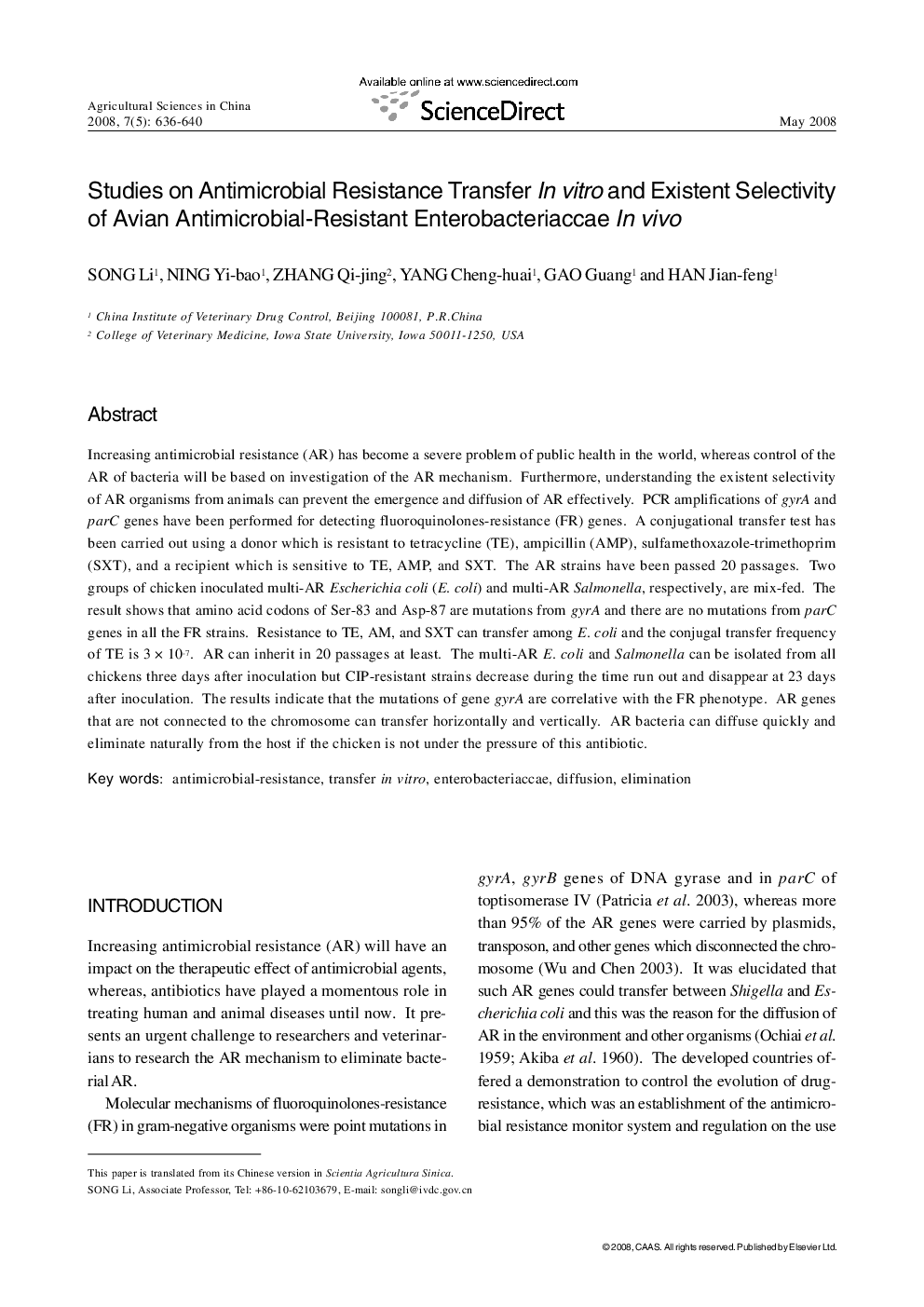| Article ID | Journal | Published Year | Pages | File Type |
|---|---|---|---|---|
| 4490697 | Agricultural Sciences in China | 2008 | 5 Pages |
Increasing antimicrobial resistance (AR) has become a severe problem of public health in the world, whereas control of the AR of bacteria will be based on investigation of the AR mechanism. Furthermore, understanding the existent selectivity of AR organisms from animals can prevent the emergence and diffusion of AR effectively. PCR amplifications of gyrA and parC genes have been performed for detecting fluoroquinolones-resistance (FR) genes. A conjugational transfer test has been carried out using a donor which is resistant to tetracycline (TE), ampicillin (AMP), sulfamethoxazole-trimethoprim (SXT), and a recipient which is sensitive to TE, AMP, and SXT. The AR strains have been passed 20 passages. Two groups of chicken inoculated multi-AR Escherichia coli (E. coli) and multi-AR Salmonella, respectively, are mix-fed. The result shows that amino acid codons of Ser-83 and Asp-87 are mutations from gyrA and there are no mutations from parC genes in all the FR strains. Resistance to TE, AM, and SXT can transfer among E. coli and the conjugal transfer frequency of TE is 3 × 10-7. AR can inherit in 20 passages at least. The multi-AR E. coli and Salmonella can be isolated from all chickens three days after inoculation but CIP-resistant strains decrease during the time run out and disappear at 23 days after inoculation. The results indicate that the mutations of gene gyrA are correlative with the FR phenotype. AR genes that are not connected to the chromosome can transfer horizontally and vertically. AR bacteria can diffuse quickly and eliminate naturally from the host if the chicken is not under the pressure of this antibiotic.
